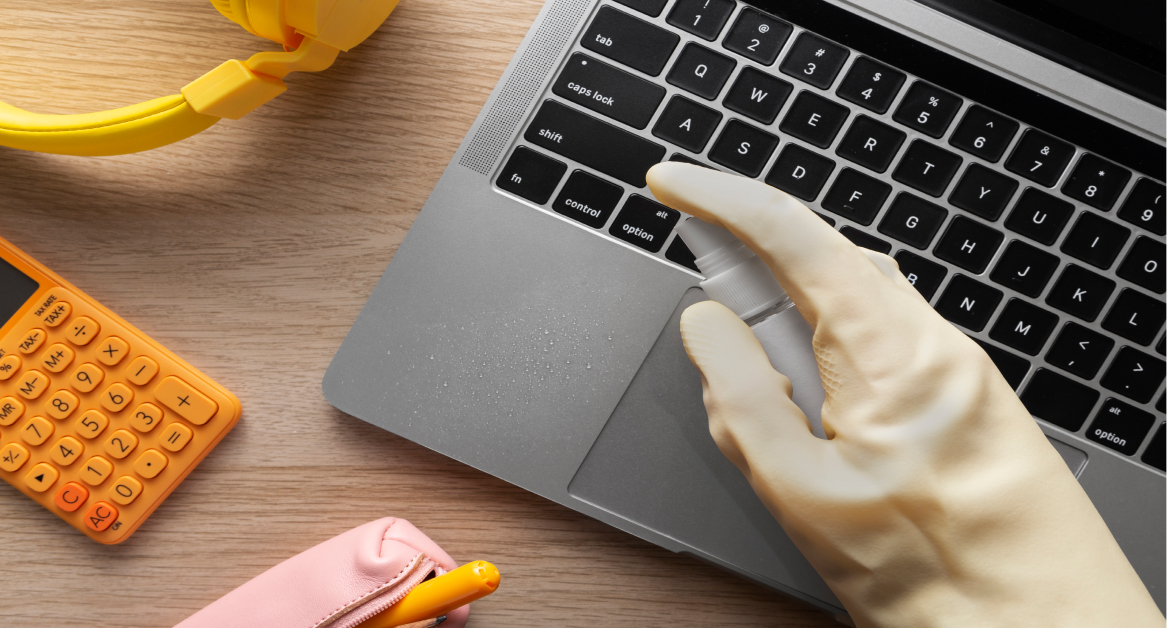Let’s be honest: most people don’t think twice about their digital habits—until something goes wrong. A weak password here, a missed update there, and suddenly your company’s sensitive data is at risk. It’s the digital version of skipping out on basic personal hygiene. Just like you brush your teeth daily to avoid cavities, good cyber hygiene helps you prevent headaches like malware infections, data breaches, and stolen personal information.
And yet, so many teams still fall victim to preventable attacks.
Whether you’re running a lean startup or managing a fast-growing remote workforce, practicing cyber hygiene isn’t optional—it’s essential. In this article, we’ll break down the most important cyber hygiene best practices, show you how to build a security-first culture and share practical tips your team can act on today.
Let’s start with why it all matters in the first place.
Why cyber hygiene matters
Cybersecurity isn’t just a concern for large enterprises. Startups, remote teams, and even individual employees are frequent targets for cybercriminals.
Poor habits—like reusing passwords or delaying software updates—can open the door to serious threats.
Good cyber hygiene helps prevent:
- Security breaches that cost money and damage reputations
- Malware infections that disrupt operations and slow down devices
- Phishing attacks that trick employees into handing over credentials
- Data breaches that expose sensitive customer or company information
Keeping your operating systems and applications secure, managing software updates, and practicing smart password habits can greatly improve your team’s security posture. Think of it like brushing your teeth and washing your hands. It’s routine. It’s simple. And it works.
Top 14 cyber hygiene best practices
Cyber hygiene doesn’t have to be complex. It starts with small, consistent actions that can prevent major issues down the line.

1. Use strong and unique passwords
It sounds basic, but weak passwords are still one of the most common causes of data breaches. Encourage your team to create complex passwords that include a mix of letters, numbers, and symbols—and never reuse the same password across different tools.
Instead of relying on memory or sticky notes, use a password manager or a free password manager for teams. These tools help generate and store unique passwords for every account, reducing the risk of credential stuffing attacks.
2. Enable multi-factor authentication (MFA)
Adding an extra layer of security with MFA (like a code sent to your phone) can stop unauthorized logins—even if someone’s password is compromised. For startups using modern tools, integrating single sign on with MFA can simplify access while boosting protection.
3. Regularly update software and systems
Delaying updates may seem harmless, but it’s one of the easiest ways for attackers to find a way in. Outdated software often has known vulnerabilities that hackers exploit.
Make sure your operating systems, apps, browsers, and security tools are regularly updating. That includes endpoints like laptops and mobile devices. Using license management software can help your IT team stay on top of what’s installed and whether it’s up to date.
4. Install reliable antivirus software
Every device your team uses should have trusted antivirus software installed and running in the background. While it won’t catch everything, it adds an essential layer of malware protection—especially for employees working on personal or shared devices.
5. Limit access to sensitive data
Not every team member needs access to everything. Practice the principle of least privilege by limiting access to sensitive data based on role or need. That way, even if one account is compromised, the potential damage is contained.
Using tools that track permissions across cloud platforms can help you spot overexposed files or dormant accounts quickly.
6. Train employees on common cyber hygiene
Your team is your first line of defense. But they need to know what to watch out for. Run regular training sessions to cover common cyber hygiene habits—like identifying phishing emails, reporting suspicious activity, and recognizing unsafe links.
Cybersecurity awareness isn’t a one-time workshop. Make it an ongoing part of your culture.
7. Use encrypted communication channels
Especially with distributed teams, it’s crucial to ensure messages, files, and calls are protected. Use business tools that offer end-to-end encryption. Avoid sharing personal information or passwords over unencrypted chat apps or email.
8. Back up critical data
Whether it’s a cyberattack or a hardware failure, losing data can be catastrophic. Regular backups—both cloud and physical—protect your business from the unexpected.
Schedule automatic backups for important files and make sure they’re stored securely. Don’t forget to test those backups to make sure you can restore data if needed.
9. Monitor devices and endpoints
Every laptop, phone, or tablet used for work is a potential entry point for attackers. Use tools that help track devices, push updates, and detect threats. With remote work, this becomes even more critical.
Esevel’s platform, for example, offers device tracking and management across multiple locations—making it easier to spot risks before they turn into problems.
10. Create a response plan
Even with the best defenses, no company is immune. Prepare a simple incident response plan so your team knows what to do in case of a breach or security incident.
Outline steps for reporting, isolating affected systems, and notifying relevant parties. A calm, informed response can prevent further damage and help you recover faster.
11. Audit user accounts and permissions regularly
Over time, employees change roles, leave the company, or stop using certain tools. But many accounts stay active longer than they should. These abandoned accounts become easy targets for attackers.
Set a schedule to review who has access to what. Remove unused accounts, tighten permissions, and ensure your license management software reflects your current team structure. This keeps your environment lean, secure, and easier to manage.
12. Secure personal and mobile devices
With hybrid work, many employees use their own laptops and smartphones for work. These devices often lack standard enterprise security, making them more vulnerable.
Encourage team members to install antivirus software, use a password manager, and keep software updated. If you manage a large or growing team, consider rolling out mobile device management (MDM) tools to apply security policies across all endpoints.
13. Watch out for social engineering attacks
Not all attacks happen through code. Some target your people directly. Social engineering tricks employees into giving away personal information or access credentials by posing as someone they trust—like a colleague or vendor.
Train your team to stay cautious, especially with emails or messages that create urgency. Double-check email addresses, avoid clicking unknown links, and always verify unusual requests.
14. Review third-party integrations
The tools your team uses every day—like project management apps or file-sharing platforms—often connect to other services through APIs. These connections are convenient, but they can also expose your systems if not managed properly.
Regularly review your third-party app permissions. Remove any integrations your team no longer uses. Only connect tools from trusted vendors, and make sure they follow strong cyber hygiene best practices themselves.
Building a culture of cyber hygiene at work
Cybersecurity isn’t just an IT issue—it’s a people issue. No matter how many tools or policies you have in place, your company’s protection ultimately comes down to the daily habits of your team.
Here’s how to create that culture from the ground up:
Lead by example
Culture starts at the top. When leaders actively follow cyber hygiene best practices—like using strong passwords, keeping their software updated, or reporting suspicious emails—it sends a clear message: cybersecurity is everyone’s responsibility.
If you’re a founder, CEO, or CIO, the way you talk about and act on security sets the tone for the entire team.
Make security part of onboarding
First impressions matter. Integrate cybersecurity awareness into your employee onboarding process from day one. Show new hires how to use the password manager, explain how to handle sensitive data, and walk through examples of common cyber hygiene mistakes to avoid.
By making security a natural part of how work gets done, you’re helping new employees build healthy digital habits early.
Offer regular, bite-sized training
Security training doesn’t need to be long or boring. In fact, shorter, more frequent updates often work better. Consider sending out monthly tips, holding quick team briefings, or sharing real-world stories of data breaches and how they could’ve been avoided.
Interactive quizzes, scenario-based learning, and even gamification can keep your team engaged without overwhelming them.
Simplify the tools you use
Complicated tools lead to shortcuts—which lead to vulnerabilities. Choose platforms and processes that are easy to use and secure by default. For example, single sign on can help reduce password fatigue while improving access control.
The easier it is for people to do the right thing, the more likely they’ll stick to it.
Review and adapt over time
Your cyber hygiene strategy shouldn’t be set in stone. As your company grows, so do your risks. New tools, new people, and new locations mean new security considerations.
Schedule regular check-ins—monthly or quarterly—to revisit your practices. Are devices being tracked? Are operating systems and tools still being regularly updated? Are access levels still appropriate?
Use those reviews to course-correct before a small issue becomes a real threat.
Make cyber hygiene part of your daily operations
Cyber threats aren’t going away. If anything, they’re getting smarter, faster, and harder to spot. But the good news is, most attacks don’t require a high-tech solution—they just require better habits.
By implementing the cyber hygiene best practices we’ve covered—like regularly updating software, using password managers, and training your team—you’re already ahead of most businesses.
At Esevel, we help fast-growing companies across Asia Pacific manage their IT securely and effortlessly. Our full-stack platform gives you the tools and support to scale with confidence.







